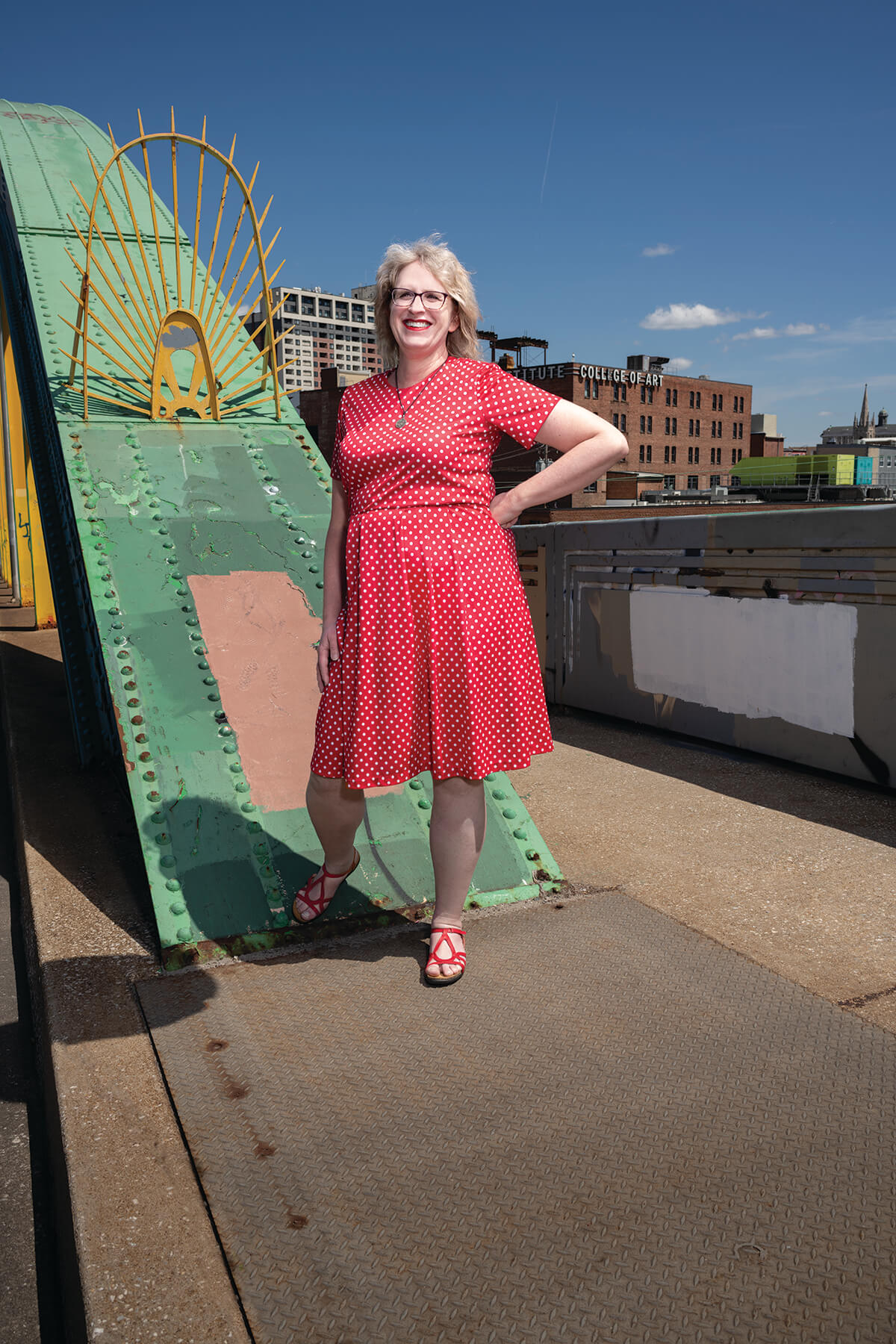Arts & Culture
GameChanger: Rahne Alexander
We catch up with the local artist and activist.

Rahne Alexander is a creative polymath—a singer-songwriter, a writer, a multimedia artist, a performer, an activist. And over the last 20 years in Baltimore, the 53-year-old Baker Artist Award winner has used that talent to become a fixture on the local arts scene, where she regularly performs under her musical persona, the 50-Foot Woman, and also contributes to local publications such as BmoreArt and UMBC Magazine. As a trans woman, she’s also a vocal advocate for the local LGBTQ community. Stay tuned for a new EP from her hard-rock band Santa Librada this summer, as well as a solo residency at The Voxel theater this fall.
Two decades ago, you arrived in Baltimore from California. How did you first realize this city was home?
I visited a friend who had come here for grad school and fell in love with Baltimore. It felt like a place where art, culture, connection, and collaboration all seemed very possible. I’ve been pleasantly surprised to see that my suspicion has paid off. It’s given me so many opportunities to connect and collaborate with artists across generations and just seep into the energy that comes out of this city.
As a trans woman, how has the local art scene shown support?
The Baltimore scene has been really welcoming for me, in many ways. I remember doing my very first performance here, which was with the Charm City Kitty Club in 2003, and getting offstage and being showered in love and admiration from generations of queer audience members. I was like, “This is what I’ve been looking for.” And that’s persisted ever since.
In California, you advocated for your community through your time as board president of what is now the Santa Cruz Diversity Center. How has art been a means of activism and self-expression, too?
When I was in California in the ’90s, I was turned into an activist by virtue of just being out in the world as a trans woman. I realized quickly that when it came to making political change, I was better suited to doing that on stage than in a courthouse. My best and most effective work was connecting with people on a [more personal] basis, oftentimes connecting with audiences. And that’s more or less what I’ve been doing for the past 20 years. When I started doing this, there wasn’t a whole lot of visibility. There weren’t a whole lot of other trans artists doing that. And now there are many, many more, and that’s great. It suggests to me that this is the time for the dialogue to be able to move to the next phase.
How does the Baltimore arts scene fare in terms of fostering inclusivity?
When it comes to curatorial decisions, a lot of times we’re still left out on the margins….Then it becomes a question of: How are we distributing resources? How are we sharing stage time? All these things are really important to keeping everything going for LGBTQ artists. We need to be seen and we need to be heard if we’re going to be able to have careers.
Tell us about your latest EP, In the Raw.
I recorded 40 songs in two days. It was just me on an electric guitar and my voice. I thought about those early Billy Bragg albums, The Trinity Session by Cowboy Junkies, and a Michelle Shocked record, The Texas Campfire Tapes. You hear the mistakes. You hear the squeaks of the guitar strings and the lyrical missteps. That intimacy is what I really wanted to go for.